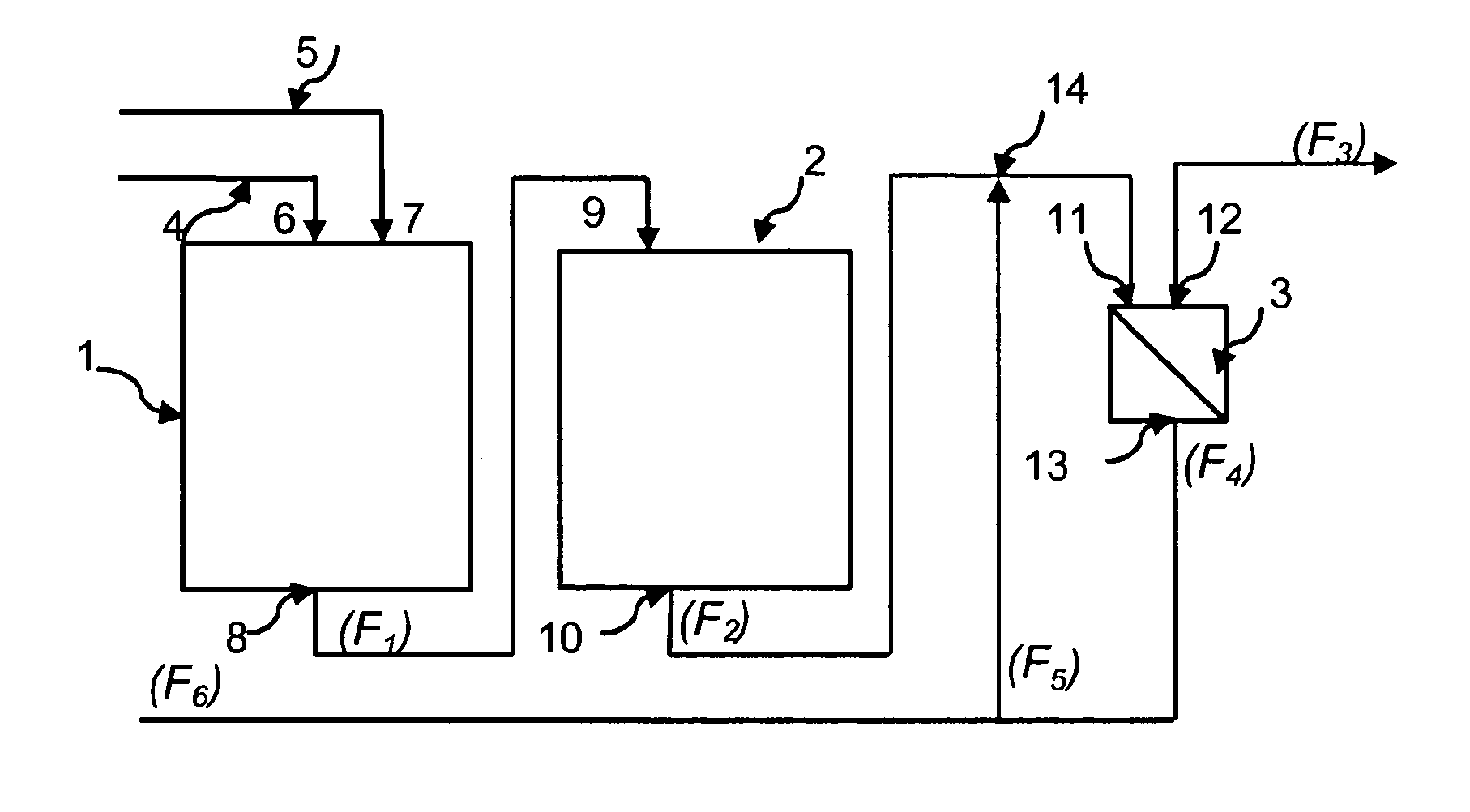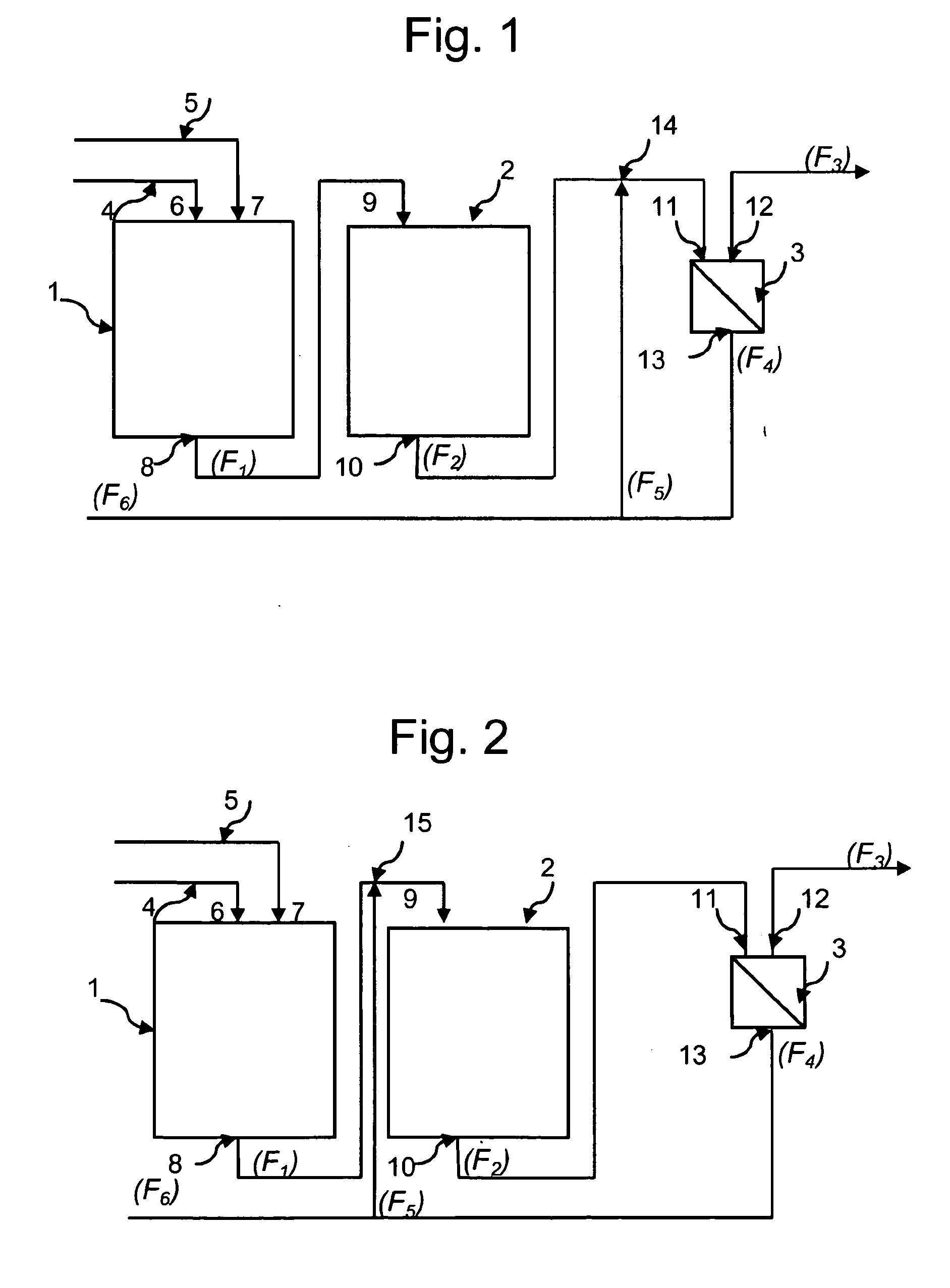Method for preparing dinitrotoluene
a dinitrotoluene and dinitrotoluene technology, applied in the direction of separation process, chemical/physical/physical-chemical process, organic chemistry, etc., can solve the problems of difficult separation, inability to reduce the quantity of supernatant nitric acid used, laborious separation of organic and aqueous phases carried out in accordance with the separation technique by decantation, etc., to achieve better separation of aqueous and organic phases and reduce the excess excess n n
- Summary
- Abstract
- Description
- Claims
- Application Information
AI Technical Summary
Benefits of technology
Problems solved by technology
Method used
Image
Examples
example 3
[0126]A continuous nitration reactor is supplied with 772 kg / h of unprocessed MNT containing 6.1% by weight of DNT and 91% by weight of MNT (H2SO4: 0.6% by weight and HNO3: 2.3% by weight). There is also co-supplied, at a rate of 1067 kg / h, a sulphonitric admixture which is made from 96% sulphuric acid and 99% nitric acid by weight.
[0127]The composition of the SN is AS: 62.8% by weight, AN: 34% by weight and water in sufficient quantity to obtain 100%.
[0128]The excess of nitric acid relative to MNT is 18 molar %.
[0129]At the outlet, the two phases are separated by means of centrifuging.
[0130]One part of the acid phase (that is, 65% by weight) is recycled as in FIG. 1, at the outlet of the finishing reactor, by means of a suitable mixing device (static mixer) or agitated small capacity device of 501 in this instance.
[0131]A sample of the supply of the centrifuge is taken after one hour.
[0132]The decantation time is in the order of 30 seconds.
[0133]The non-recycled part of the residua...
example 4
[0134]Example 3 is reproduced with the exception of the excess of nitric acid which is reduced to 6 molar % (as opposed to an excess of 18 molar % in example 3).
[0135]The excess is controlled by measuring the nitric acid in the residual acid which changes from 2 to less than 1% by weight.
[0136]The decantation time of the sample taken from the supply of the centrifuge remains approximately 30 seconds.
[0137]The method of the invention which is based on a continuous phase change (continuous organic phase→continuous acid phase) made possible by the implementation of the recycling of the acid phase, allows a change from a decantation time measured at the supply of the centrifuges of 48 hours with a high excess of nitric acid (18 molar %) to a decantation time of 30 seconds with a reduced excess of nitric acid (6 molar %).
PUM
| Property | Measurement | Unit |
|---|---|---|
| Temperature | aaaaa | aaaaa |
| Temperature | aaaaa | aaaaa |
| Fraction | aaaaa | aaaaa |
Abstract
Description
Claims
Application Information
 Login to View More
Login to View More - R&D
- Intellectual Property
- Life Sciences
- Materials
- Tech Scout
- Unparalleled Data Quality
- Higher Quality Content
- 60% Fewer Hallucinations
Browse by: Latest US Patents, China's latest patents, Technical Efficacy Thesaurus, Application Domain, Technology Topic, Popular Technical Reports.
© 2025 PatSnap. All rights reserved.Legal|Privacy policy|Modern Slavery Act Transparency Statement|Sitemap|About US| Contact US: help@patsnap.com


